The Secret Impressionists
Lot-Art had the pleasure to visit the Secret Impressionists exhibition at Palazzo Bonaparte in Rome. The exhibition is open to the public from 6 October 2019 until 8 March 2020.
Palazzo Bonaparte is the splendid Baroque edifice in Piazza Venezia named after Napoleon’s mother Maria Letizia Ramolino who lived there until 1836: traditionally used as a private residence, today this building becomes accessible to the public by virtue of a partnership between Generali Italia and Arthemisia.
Impressionisti Segreti, the first exhibition ever held in Palazzo Bonaparte, is a unique opportunity to rediscover the history of Impressionism through fifty masterpieces by artists including Monet, Renoir, Cézanne, Pissarro, Gauguin, and many others, from the most important private collections, exclusively and generously on loan for this extraordinary occasion. The artworks have remained hidden from the general public and admired only by their lucky owners and their restricted circle. Therefore, the exhibition is called "Secret Impressionists”.A fascinating journey across the most captivating and intriguing artistic movement in the history of art, with late nineteenth-century film stills of Paris, alluring portraits of women from the elite of the day, and vibrant light-infused paintings.
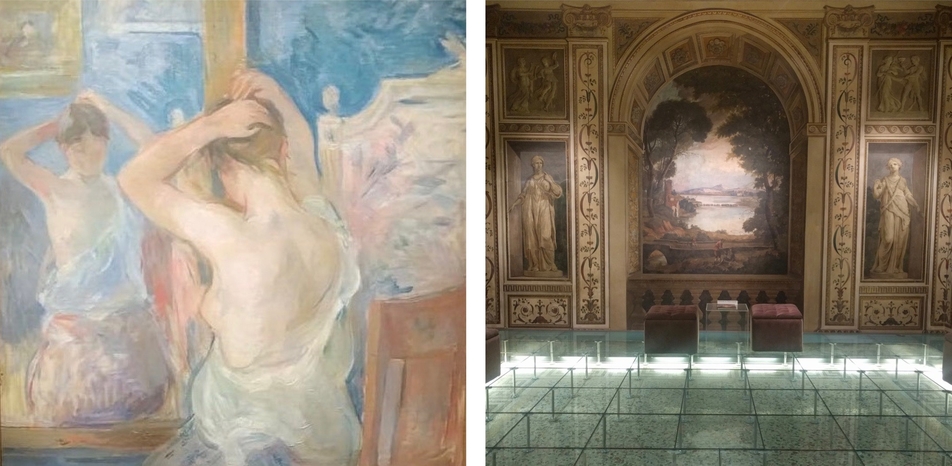
Left: Berthe Morisot, Before the mirror, c.1990. (see full-size image »); Right: The last room of the Secret Impressionists exhibition - itinerary-decorated walls (see full-size image »)
The curatorship of the exhibition has been entrusted to two internationally affirmed professionals, Marianne Mathieu, scientific director of Musée Marmottan Monet, Paris, which holds the world’s greatest collection of Claude Monet’s works, and Claire Durand-Ruel, descendant of Paul Durand-Ruel, he who redefined the role of art merchant and who was the first supporter of the Impressionists’ creations.
IMPRESSIONISM AND LANDSCAPE

Left: Claude Monet, Apple trees in bloom at water’s edge, 1830 (see full-size image »); Right: Pierre-Auguste Renoir, The Capri Marina, c.1881 (see full-size image »)
In 1874, a group of artists rebelling against academic art set up its first exhibition in a few rooms made available by photographer Félix Nadar, at no.35 Boulevard des Capucines in Paris. Among these artists were Claude Monet, Pierre-Auguste Renoir, Camille Pissarro, Edgar Degas, Alfred Sisley, Berthe Morisot, Armand Guillaumin and Paul Cézanne. Édouard Manet was the leading proponent of the group, even though his paintings were never displayed with those of the other artists.
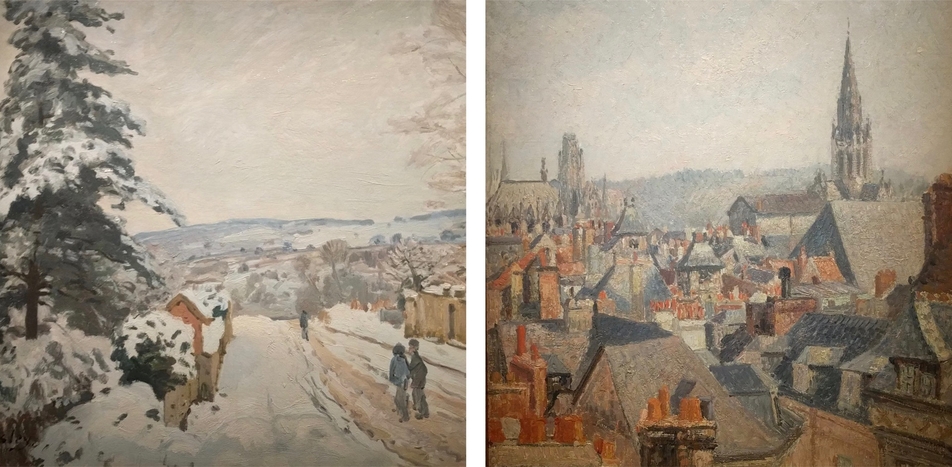
Left: Alfred Sisley, The Coeur volant road to Louveciennes, 1879; (see full-size image »); Right: Camille Pissarro, The roofs of old Rouen, sunlight, 1896 (see full-size image »)
The sight of these artworks caused great shock among the viewers, and the reviews were very negative, but regardless of their fiasco, these artists did not get discouraged and with the support of a small group of estimators and forward-looking art merchants, continued with what was to become the greatest artistic revolution of their time. What dismayed the art critics and that eventually marked the success of this pictorial style were, in fact, its key characteristics: everyday subjects; clear, bright, colourful images, far from the bituminous and earthy tones of academic painting; an in-depth study of the effects of light on objects and living creatures, and fragmented brushstrokes for a better rendition of atmospheric effects. Those artists that could be classified as landscape painters – Monet, Pissarro, Sisley and Guillaumin – dismissed grand views and placed their easel before often ordinary everyday scenes, closer to their reality. Impressionist painters would sit on the riverbank with the sky reflecting into the water, describe the countryside, a sunny cliff, observe rural life, capture the penetrating winter cold, observe the sun’s path. Impressionists no longer painted landscapes inside a studio but outdoors, where light, air, ice, and warmth could penetrate their paintings.
PAINTING LIFE IN PARIS
In the nineteenth century, artists from all over the world traveled to Paris, the cradle of international cultural life. The French capital was where a young artist could make a name for himself, receive training, meet other painters, and most importantly be acknowledged by art collectors and merchants. Paris also was home to the great exhibitions that attracted interested viewers. Those were years of industrial development when Paris was synonymous with modernity. With Baron Haussmann’s urban plan, Paris saw the addition of wider roadways and elegant buildings.
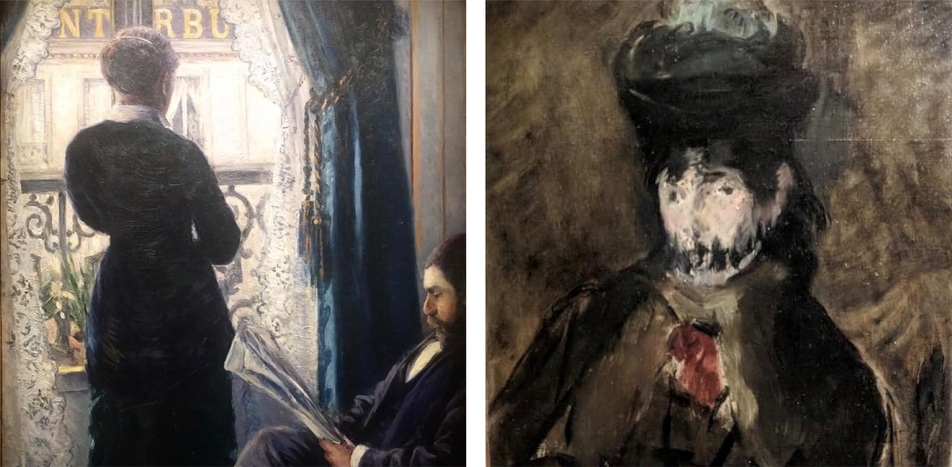
Left: Gustave Caillebotte, Interior, woman at the window, c.1880 (see full-size image »); Right: Édouard Manet, Portrait of Berthe Morisot in a veil, 1872 (see full-size image »)
Gustave Caillebotte was a direct witness of these transformations, depicting on his canvases images of crowds in the streets and boulevards, the city bustle, viewed from a balcony or standing behind a window in the comfort of a middle-class home. On the other hand, Édouard Manet, Berthe Morisot and Eva Gonzalès, the most Parisian artists of the Impressionist group, chose to leave the confusion of the city to explore a more intimate universe, painting portraits of friends and relatives.
 Left: Eva Gonzalès, The indolence, c.1871-1872 (see full-size image »); Right: Berthe Morisot, Young girl with doll, c.1884 (see full-size image »)
Left: Eva Gonzalès, The indolence, c.1871-1872 (see full-size image »); Right: Berthe Morisot, Young girl with doll, c.1884 (see full-size image »)
RENOIR, PAINTER OF FIGURES
Unlike Monet, Sisley and Pissarro Pierre-Auguste Renoir favoured figures, and in his paintings landscape is essentially an accessory. While the painter was still alive, a famous art critic once said: “I doubt there has ever been a painter who has interpreted women more seductively. Renoir’s rapid and light brushstrokes create grace, softness, spontaneity, render skin transparent, and give a bright complexion to his sitters’ cheeks and lips. Renoir’s women are delightful creatures…”.
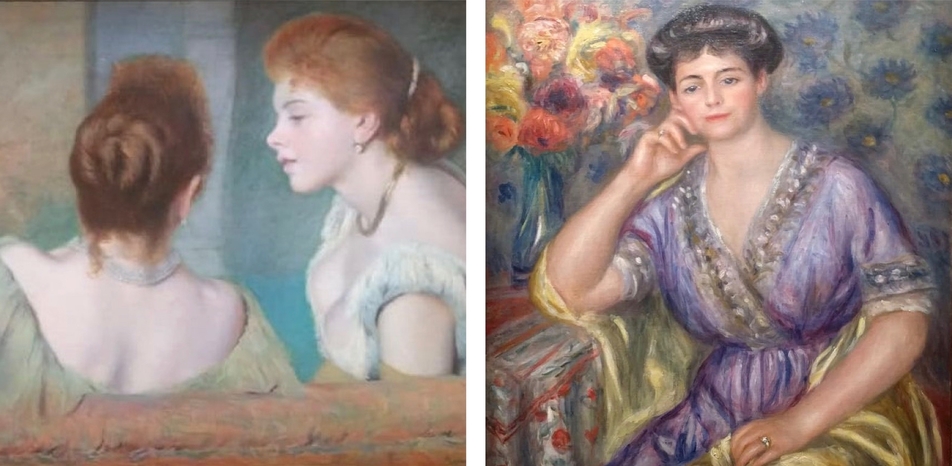
Left: Federico Zandomeneghi, On the couch, 1885-1890 (see full-size image »); Right: Pierre-Auguste Renoir, Portrait of Madame Joseph Durand-Ruel, 1911 (see full-size image »)
Throughout his life, Renoir executed a great number of portraits, about two thousand, mainly of those who made him feel content and truly happy, women and children. Born into a simple family, Renoir was able to make a living creating family paintings that were commissioned to him by clients of the French upper-middle class and aristocracy. Besides immortalizing these prominent personalities, Renoir also painted many anonymous subjects, bust portraits or standing or seated full figures, busy reading or dreaming, each of them eloquently capturing the person’s character and attitude.
NEO-IMPRESSIONISM

Left: Henri-Edmond Cross, The excursionists, 1893-1895 (see full-size image »); Right: Paul Signac, Sailing boats and pine trees, c.1896 (see full-size image »
1886 was the year that marked the end of Impressionism. A new generation was ready to pick up the baton. When in 1886 the Impressionists organised their eighth and final group exhibition, a new artistic movement was already on the rise, animated by Georges Seurat and Paul Signac, and whose practice was termed Neo-impressionism by art critic Félix Fénéon. This term defines a painting technique that instead of blending colours on the palette prescribed that they be juxtaposed directly on the canvas in the form of little brushstrokes. By doing so, the individual colours merge at a distance on the observer’s retina. At the exhibition of 1886, Seurat, the leading figure of the movement, presented A Sunday on La Grande Jatte (The Art Institute of Chicago) that became the manifesto of the group.
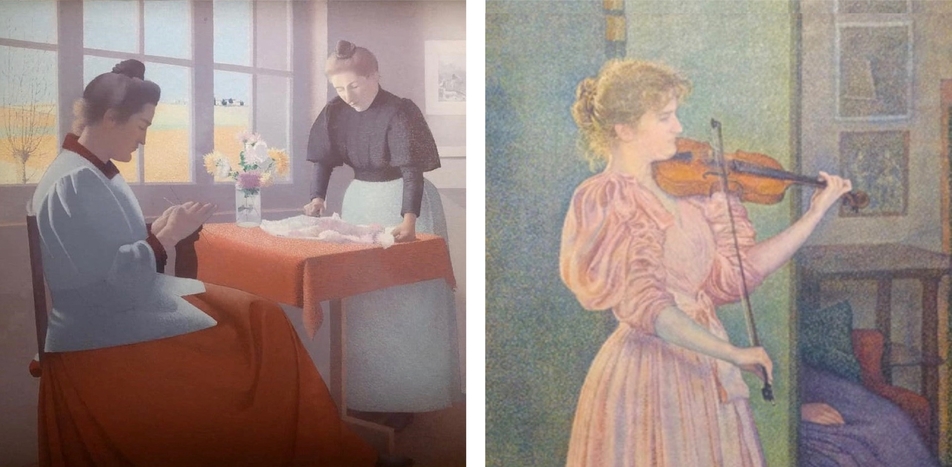
Left: Achille Laugé, By the window, 1899 (see full-size image »); Right: Théo Van Rysselberghe, Portrait of the violinist Irma Sèthe, 1894 (see full image »)
The Neo-impressionist technique, so scientific and rigorous, attracted several artists, such as Signac, Théo van Rysselberghe, Henri-Edmond Cross and Achille Laugé. These young artists retained several aspects of Impressionism, such as the choice of everyday themes, the use of colour, and in particular the focus on light variations. On the other hand, the rapid and instantaneous brushwork of the Impressionists seems an impromptu technique compared to the rigorous Neo-impressionist method that with countless small flecks of colour was able to produce pictures vibrating with light.
LOT-ART SERVICES
Art Investment Advisory: proposing a financial approach to art collecting, Lot-Art offers a synergic cluster of tools for optimal investment decision-making in art-related assets. Lot-Art can help you selecting artworks & luxury collectibles with the highest degree of liquidity and opportunity of return. This service will best serve privates and institutions who wish to invest in art as an asset class but don’t have the expertise to unveil and select the best deals in the global art market, Download the Art Investment brochure.
Valuate & Sell: you can appraise for FREE the value of your art & collectibles with the purpose of selling at auction. Disclose the monetary value of your assets, request a free valuation »
Buy Now: Lot-Art has added, aside to auctions browsing, the opportunity to search artworks from trusted art collectors, artists and galleries. If you are not yet acquainted with the thrill of bidding at auction you can just buy selected artworks and luxury assets in perfect relax proposing your offer through the Lot-Art Gallery.
Discover more Highlights & Explore the Financial side of Art on Lot-Art.com
Disclose the value of your assets, request a free valuation
LOT-ART | The Art Investment Platform
Other interesting articles
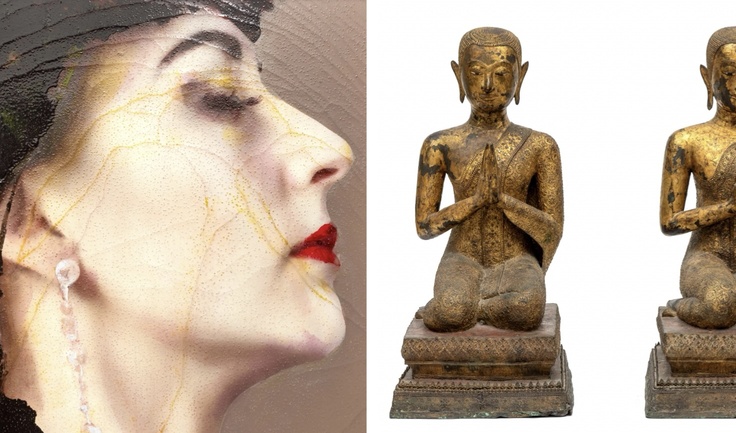
|
Thu Apr 25 2024
Art and Antiques at De Zwaan, AmsterdamDe Zwaan, Amsterdam presents the Spring Art and Antique Sale on April 30th - May 15th. The sale features fine art, Asian art, classic furniture, jewellery, watches & clocks, Tribal art and varia. Discover the Auction Highlights or browse the full catalogue here » SELECTED LOTS LEFT: Walasse Ting (1929-2010) - "Two women with parrots" Watercolour and Gouache, signed with... |
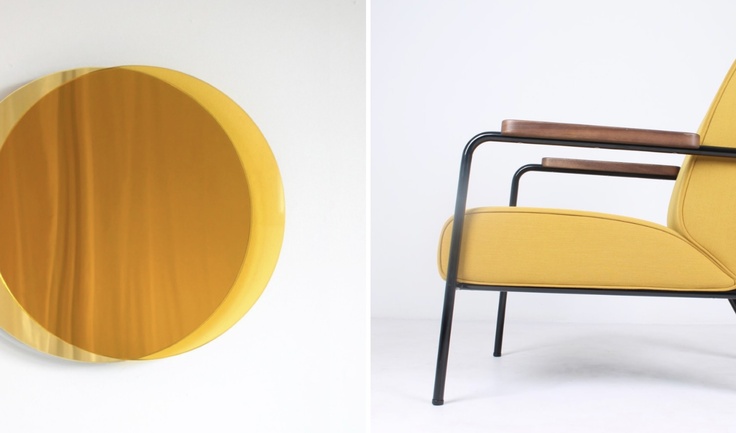
|
Wed Apr 24 2024
Masterly x Catawiki: "Homage" Collection | Exclusive DesignFor the installation at Salone del Mobile 2024, Catawiki and Masterly commissioned contemporary creators to reinterpret design icons. The auction "Homage" - A Tribute in Auction on April 28th is curated by Masterly founder, Nicole Uniquole, and includes the world-famous Eames Lounge Chair reimagined by Stefan Scholten. An auction inspired by the installation at Salone... |
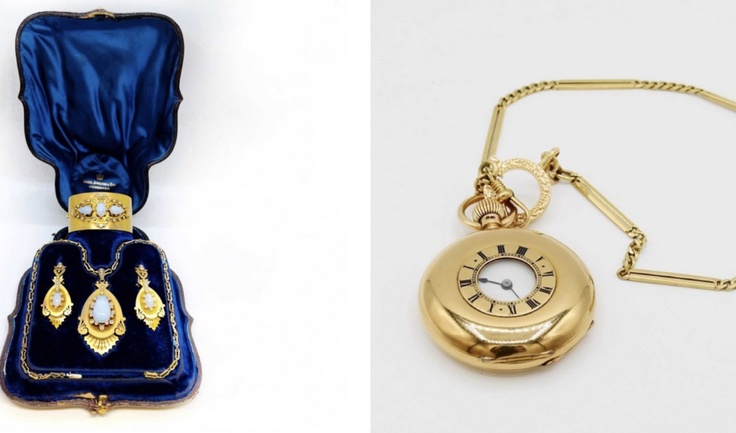
|
Tue Apr 23 2024
A Selection of Jewelry at Casa d'Aste Guidoriccio, ItalyCasa d'Aste Guidoriccio, Italy presents the Auction: "Jewels. A Selection of Jewelry and Precious from Private Collections" on April 30th. Discover the Auction Highlights or browse the full catalogues here » SELECTED LOTS LEFT: Platinum and Diamond Ring, Fabergé Victor Mayer Collection. Diamonds totalling 0.78 ct. Limited series 11/100. See Price Estimate... RIGHT: 750... |
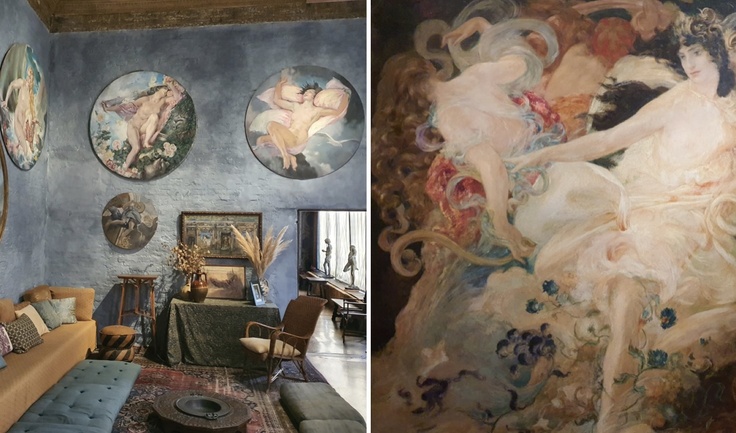
|
Mon Apr 22 2024
Enchantment at Palazzo Fortuny: 'Selva' by Eva Jospin in VeniceLEFT: Photograph of the Mariano Fortuny Y Madrazo Museum; RIGHT: Wagnerian Cycle. Parsifal. The Flower Maidens, Mariano Fortuny y Madrazo, 1896 Mariano Fortuny y Madrazo, born in Granada in 1871, was a renowned Spanish artist celebrated for his innovative contributions in the realms of fashion, photography, and lighting design. Fortuny gained global fame for the... |